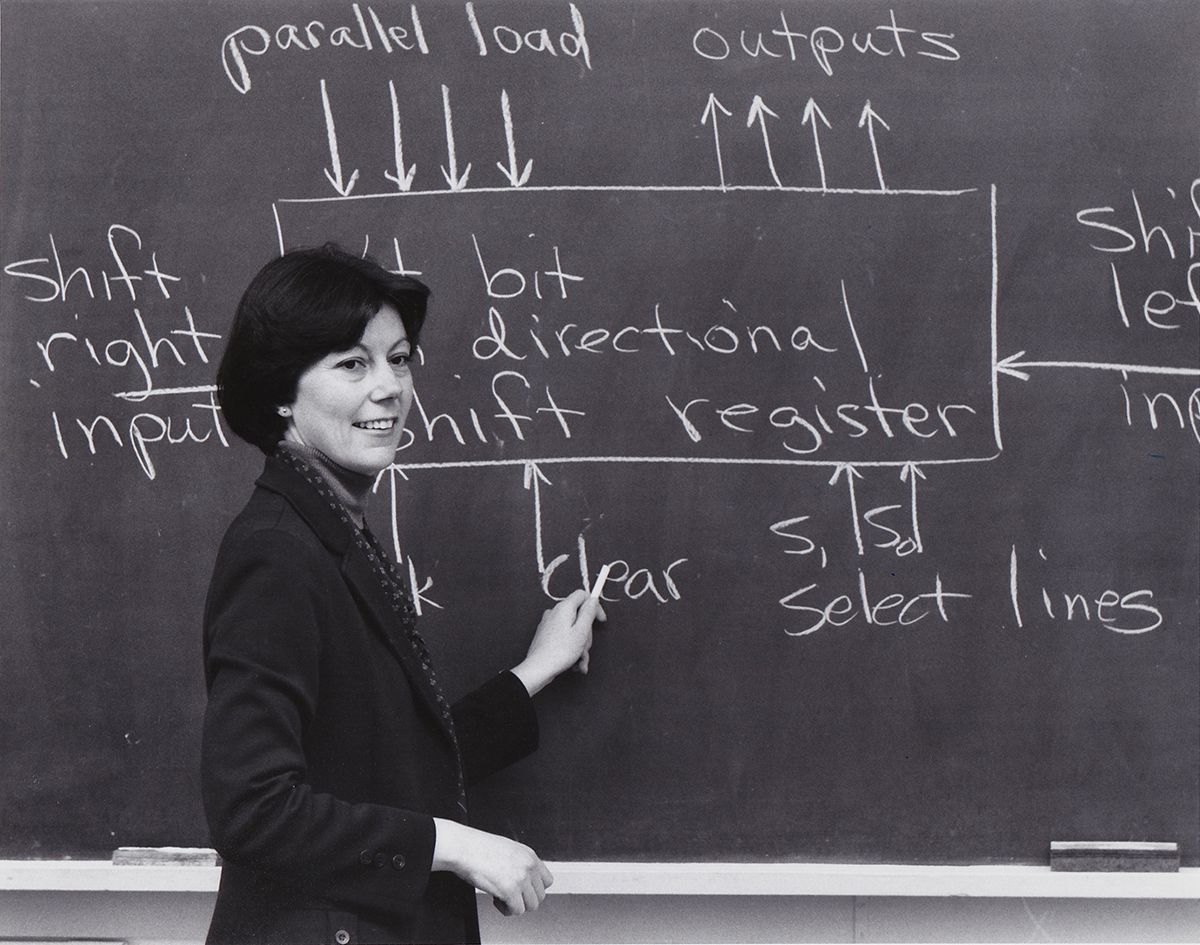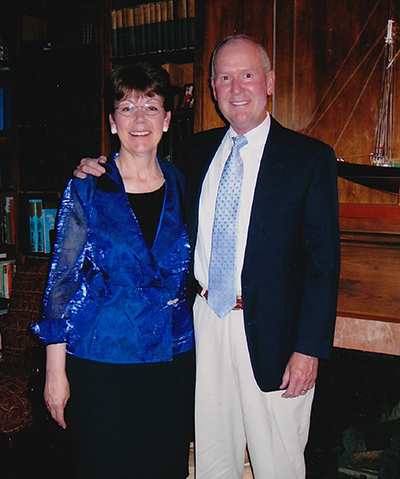Delores Etter: Her time to help students open doors with an engineering education
Her story
For Delores Etter, her wide-ranging education and career all adds up into a nice equation.

“I’ve decided that my 40-year career is best described in three sequential phases: 20 years as an academic, 10 years working in the national security arena, and then 10 years working on biometrics research, developing STEM programs, and participating on corporate boards,” she said.
Etter grew up in a small rural town in Oklahoma. She loved math in high school and chose that as a major at Oklahoma State University (OSU) and quickly discovered that she also loved the computing courses that were just beginning to be offered in universities.
While at OSU, she met and married her husband Jerry, who was two years older and a student in aerospace engineering. Their plan was for Jerry to finish his bachelor’s and master’s while Delores finished her bachelor’s. But world events changed their plans. After Jerry received his bachelor’s degree, he attended officer’s training school in Texas, followed by two tours of duty, first at Wright Patterson Air Force Base in Dayton, Ohio, and then to Kirtland Air Force Base in Albuquerque. At Wright Patterson, Jerry worked on unmanned systems in the Flight Dynamics Laboratory, and at Kirtland he worked on laser systems at the Starfire Facility.
Delores continued to focus on her education, earning bachelor’s and master’s degrees in mathematics (with a computer focus) at Wright State University, and a Ph.D. in electrical and computer engineering at UNM. In fact, she was the first woman to get a Ph.D. in engineering at UNM.
“Math is the foundation of engineering, and with my computing background, I found that the area of digital signal processing [within electrical engineering] was the ideal path for me to work on important real-world problems,” she said.
Etter’s career for the next 20 years was a typical academic one: university teaching, research, textbook writing and professional service. She spent 10 years on the electrical engineering faculty at UNM before joining the electrical and computer engineering faculty at the University of Colorado in Boulder. After leaving the Air Force, Jerry worked at Sandia National Laboratories in control system design, and then joined Ball Aerospace Corp. in Boulder, where he worked on spacecraft and laser hardware.
“Education allows young people to follow their dreams, and I loved being a part of helping them along this path,” she said.

The next 10 years led Delores and Jerry on some unexpected paths. Because of Delores’ work with research colleagues at Sandia while at UNM, she became involved with Department of Defense advisory committees, and continued that work while at CU. In 1998, she was nominated by President Clinton to the position of Deputy Under Secretary of Defense for Science and Technology and served in the Pentagon for three years. She then joined the electrical engineering faculty at the U.S. Naval Academy in Annapolis. In 2005, she was nominated by President Bush to the position of Assistant Secretary of the Navy (Research, Development, and Acquisition) and served in the Pentagon for another two years. During this 10-year period, Jerry worked for Boeing Corp. in the Washington, D.C., area. He retired in 2007 after 40 years of engineering contributions to national security systems.
“Education only allows students to follow their dreams in free countries,” Delores said. I have been fortunate to be a part of our wonderful education system in this country, and to also be a part of our national security programs that are necessary to ensure the freedoms that we enjoy.”
The final decade of Etter’s career was spent as a faculty member in the Electrical and Computer Engineering Department at Southern Methodist University (SMU) in Dallas, where she held the Texas Instruments Endowed Chair in Engineering Education. Her focus was on biometrics research (with an emphasis on iris recognition) and STEM programs. During this time, she also was invited to join a number of corporate boards. She retired from SMU in 2017.
“My career has had twists and turns that allowed me to participate in academia, in national security and in corporate leadership. What fun I have had!”
She said her hard work and education made so much in her life possible, which is a key reason she wants to give back to help students also benefit from education.
“Life gives you opportunities, but only if you are prepared. Education prepares you.”
Today, Delores and Jerry spend most of their time on Camano Island, Wash., near their daughter and her family.
How she is giving back

Delores and Jerry Etter
The Delores and Jerry Etter Scholarship Program in the School of Engineering was created in 2017. For three years, the program provided six freshmen scholarships to encourage women students to major in engineering. In 2020, the Etters expanded their commitment. The program now funds ten new freshmen scholarships each year and continues funding the students from previous years, up to a total of four years of support for each student.
Today, there are 40 Etter scholars in the School of Engineering: 10 freshmen, 10 sophomores, 10 juniors, and 10 seniors. The students receive $2,500 per year and are selected by the School of Engineering so that each group of freshmen includes students from each of the six departments in the School. If a student drops out of UNM, or changes to a non-engineering major, a replacement at the same level is selected to maintain a cohort of 40 women in the program.
“It is time for Jerry and me to give back, and helping students obtain an engineering degree at UNM is the best way for us to do that. It is also great to encourage the growing number of women in UNM’s engineering programs,” she said.
